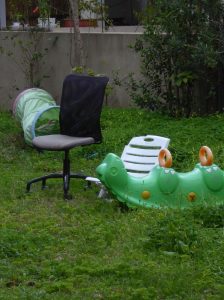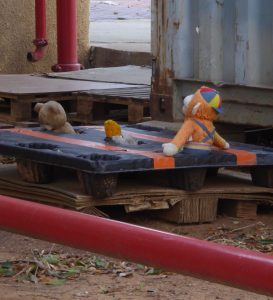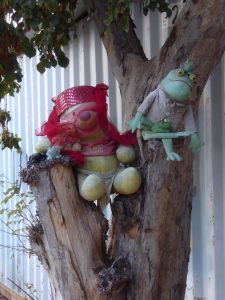
Naomi’s photos
No pictures, videos or creative games.
I needed a direct, no frills approach, to highlight my point this time.
My high school students’ final exams (internal and then national) are coming up. In between we have holidays and school trips (not to mention a slew of lectures), all cancelling lessons.
The clock is ticking.
It’s time to pick my fights – review skills most of my struggling learners have been able to employ successfully when they actually remember to keep them in mind.
What’s more, I have discovered that using the word “trap” seems to awaken a competitive streak in some of the students, so I’ve decided to capitalize on their awakened interest.

Naomi’s Photos
I told the students that whomever it is that writes the national final exams knows that some students have a system for answering multiple choice questions on reading comprehension tasks. A system that doesn’t require reading. These students simply look for words that look alike in the options and in the text and then choose their answer without further investigation. For example:
| The Sentence from the Text | The Wrong Answer |
| 1. Mr. Jay invested 11 million dollars in the football team. | X Mr. Jay earned 11 million dollars from the football team. |
Such students see the words “11 million dollars” and fall blithely into the trap the exam writer has set. They distractor that “looks-alike” is the wrong one (“Duh”, my strong students would say, but this is not for them)!
So, I challenged the students to outsmart the exam writers and not fall into the “look-alike” trap that has been set for them.
Together we examined 8 sentences, which I have modified from actual national exams (I had to modify the sentences to make them clear when being read out of context) and corresponding incorrect answers chosen by unknown students who had forgotten about the “traps”. I didn’t worry about vocabulary – I supplied any glosses needed. The students led the activity, almost all of them were able to explain why the answer chosen was incorrect. Or, to rephrase, what caused the unknown student who picked such an answer (they, of course, would never do such a thing!) to do so.
The fact that the students were able to analyze the errors successfully with hardly any guidance on my part (mainly glossing or adding context) didn’t mean the activity was too easy.
Quite the opposite.
They seemed to feel empowered. They could avoid a trap! They weren’t going to lose 8 points over nothing!
But will all of this actually come into play when the students take their national finals?
That remains to be seen…

Naomi’s Photos
Here is the worksheet I used. The downloadable document contains two versions – one with the “critical” words underlined, and the other with no hints whatsoever. I used the version without any words underlined.
***Remember – this is not a worksheet for self-study. It is the discussion that matters. I was even able to sneak in a reminder about superlatives…
